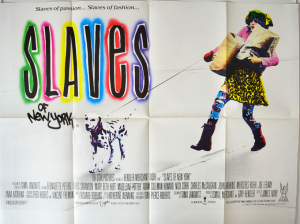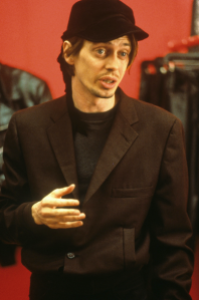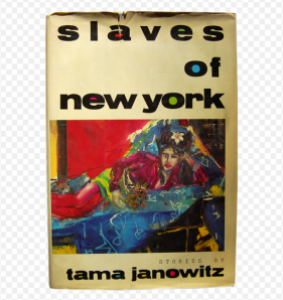Tama Janowitz, a member of the literary Brat Pack crème de la crème, released the novel, Slaves of New York, in 1986. A selection of intertwining stories, the narrative focused on the struggle of pursuing a bohemian life (primarily in Lower Manhattan).Twenty-eight years later, it’s safe to say that the fundamental principle of Slaves of New York has remained the same: Aspiring artists in this city are doomed to a life of misery, disappointment and inevitable failure against others’ work that tends to be shittier and more pseudo-intellectual.
The main characters that orbit one another’s social circle consist of Eleanor, an insecure jewelry designer who focuses more on her lackluster relationship than her jewelry making, Stash, the semi-successful artist Eleanor is living with, Marley, an up and coming artist looking for the right patron, and Sherman, an artist who can’t seem to find the same level of fame as Marley’s. Each person suffers from the unavoidable mistake of comparison, one of the most common afflictions of living in New York.

From the outset, we are shown the nature of New York for an artist, which essentially means performing a menial job for money while you try to eke out time to do your own “personal projects.” The prostitute who initiates the book in the chapter “Modern Saint” explains that “when [she and her pimp] first became friends, he was driving a taxicab, but soon found this left little time for his own work, which was to write.” The irony of coming to New York City to “make art” is, of course, that you’re never permitted the luxury of time or money to create said art.

Although the medium of artistry has changed since the late 80s–where once it was graffiti, canvas and mixed media that prevailed, now it seems blogging and social commentary of a bloviating kind is the constitution of an artist–Slaves of New York is still very much a relevant portrayal of the city in the modern era. Because everyone who moves here with dreams of fame and importance within his or her particular niche ultimately realizes that achieving said objective isn’t as easy as Madonna or Carrie Bradshaw made it look.

The film version of the book, which came out in 1989 (just in time to capture the essence of the aura of the decade in NYC), may be noticeably different from its literary form, but, nonetheless, manages to encapsulate the New York-specific plight of trying to “be someone.” Although the movie was universally panned, which just means it’s a cult classic (Steve Buscemi is in it, after all), there is something uniquely meticulous about the way Janowitz chose to reconstruct her characters for the screen. For instance, instead of being a jewelry designer, Eleanor is a hat designer, which seems in keeping with Bernadette Peters’ quirky vibe.
In spite of the passage of time, both the book and the film remain incredibly resonant with regard to an artist’s existence in a city that favors the eight-hour workday, mind-numbing, low-paying jobs and a love of fostering talent that is largely terrible, but poses as innovative under the guise of being esoteric. While “the scene” may have migrated to Brooklyn, the struggle hasn’t changed–regardless of the advancement of technology designed to democratize how people showcase their art.




















